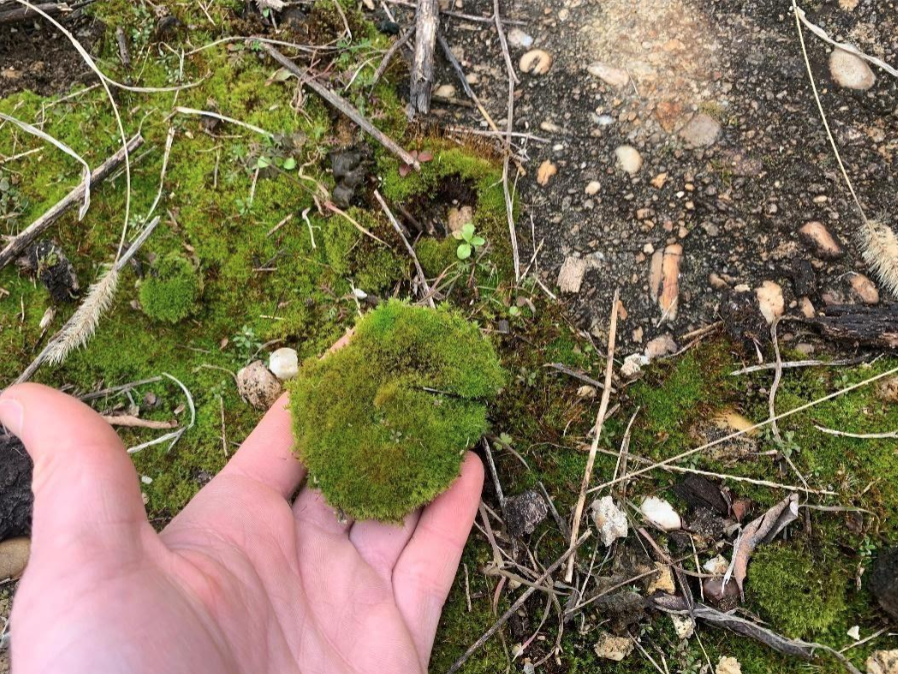The National Bonsai Foundation is proud to partner with the U.S. National Arboretum in maintaining the National Bonsai & Penjing Museum. In addition to caring for these living masterpieces, we support the museum’s expert curators with ongoing education and professional development, ensuring they stay at the forefront of bonsai artistry. These opportunities allow them to refine their skills, explore the latest techniques, and continue growing as leaders in their field.
In this post, Andy Bello, Assistant Curator (and our 2019 National Bonsai Apprentice), shares insights from a recent experience that helped shape his approach to bonsai care and curation.
Last winter, I had the wonderful opportunity to spend two weeks in Portland, Oregon, traveling to work and learn with a focus on fall and winter seasonal bonsai techniques. Part of my time was spent at Crataegus Bonsai, owned by bonsai professional Michael Hagedorn. Michael is a well-respected bonsai artist and teacher who apprenticed with Shinji Suzuki in Obuse, Japan from 2003-2006. He serves as the Bonsai Consultant for the Portland Japanese Garden, teaches international students at his garden, and blogs weekly at crataegus.com.
I remember my first time seeing a specific bonsai in person at the Portland Japanese Garden in 2017, my first year practicing the art. Walking to the upper bonsai courtyard, I was greeted by a large mountain hemlock planting growing on a slab. It was so large, in fact, that it was displayed on a small wooden stand on the ground, and the tallest tree stood about six feet tall. This composition was the first of this size and refinement I had seen. Its long, elegant trunks reached up and out towards the sky, with lush green foliage artfully arranged to give windows into the interior of the composition, telling the tree's story. This piece changed everything for me—it solidified my love for bonsai and encouraged me to pursue the art form as more than just a hobby.
Six years later, as the assistant curator at The National Bonsai and Penjing Museum, I found myself standing in Michael’s garden on a work trip, pruning my favorite tree. It felt as if my life in bonsai had come full circle. For the time I worked on that tree, I was in pure bliss, and I will never forget that wonderful feeling. But as anyone who practices bonsai knows, there is always more to be done and more trees to work on and care for.
During my time at Crataegus Bonsai, I studied some of the fascinating compositions Michael has created over the years. Some of the ones that stood out to me were planted at inclined angles or mounted on the side of walls, combining traditional Japanese bonsai with modern, innovative ideas. His garden left a lasting impression on me—it showed that we need not be limited by the container or a particular style we are accustomed to following. There is endless opportunity, and ample room to be playful and enjoy the creative process.
The second half of my time in Portland was spent at Rakuyo Bonsai, owned and operated by Andrew Robson. Andrew is an award-winning deciduous artist in the American bonsai community. He completed a three-year apprenticeship with Michael Hagedorn after graduating from Yale University. Andrew also studied shohin bonsai display with Daisaku Nomoto, an award-winning Japanese shohin master and judge at Gafu-ten. He serves as the President of the Bonsai Society of Portland, the largest bonsai club in the United States, and regularly exhibits work at the Portland Japanese Garden, where he also lectures at the Japanese Arts Learning Center. Andrew hosts the Bonsai Wire Podcast and regularly creates new episodes with other prominent figures in the bonsai community. He resides at his deciduous garden, Rakuyo-en, with his golden retriever Bailey, where he teaches and shares the art of deciduous bonsai.
The main reason I wanted to work with Andrew was his focus on deciduous bonsai and the quality and size of the specimens in his garden. At The National Bonsai and Penjing Museum, I’ve become accustomed to working on larger trees, so I felt right at home at Rakuyo with its variety of well-cared-for material. From trees in the early stages of development to award-winning specimens in refinement, there was something interesting to view, study, and learn from throughout the garden. Inside, sheltered from the cool, constant rain of the Pacific Northwest, we focused on fall and winter cleanup, caring for deadwood, pruning, and styling. We also enjoyed engaging conversations about techniques, the art form, and its future—always with Bailey, the bonsai dog, close by.
Most of the work we completed was wiring and pruning for shape and structure on a variety of species such as Stewartia, hornbeam, beech, and maples. Late fall and winter are ideal times to do this type of work, as the leaves have fully changed color and fallen, making it much easier to see and apply wire to the branches. After wiring, we placed the trees in front of a clean backdrop to photograph, discuss, and adjust the branch positions.
Working at Rakuyo with Andrew was educational, inspirational, and pure fun. His focus and dedication to teaching, growing, and learning more about deciduous bonsai inspires me to continue cultivating more varieties of trees and expanding my techniques.
I am very grateful and honored to have spent time working with both Michael and Andrew, and I look forward to working on trees with them again in the future. Thank you to The National Bonsai Foundation for supporting my continued education in this timeless art.











